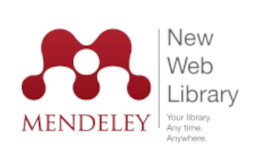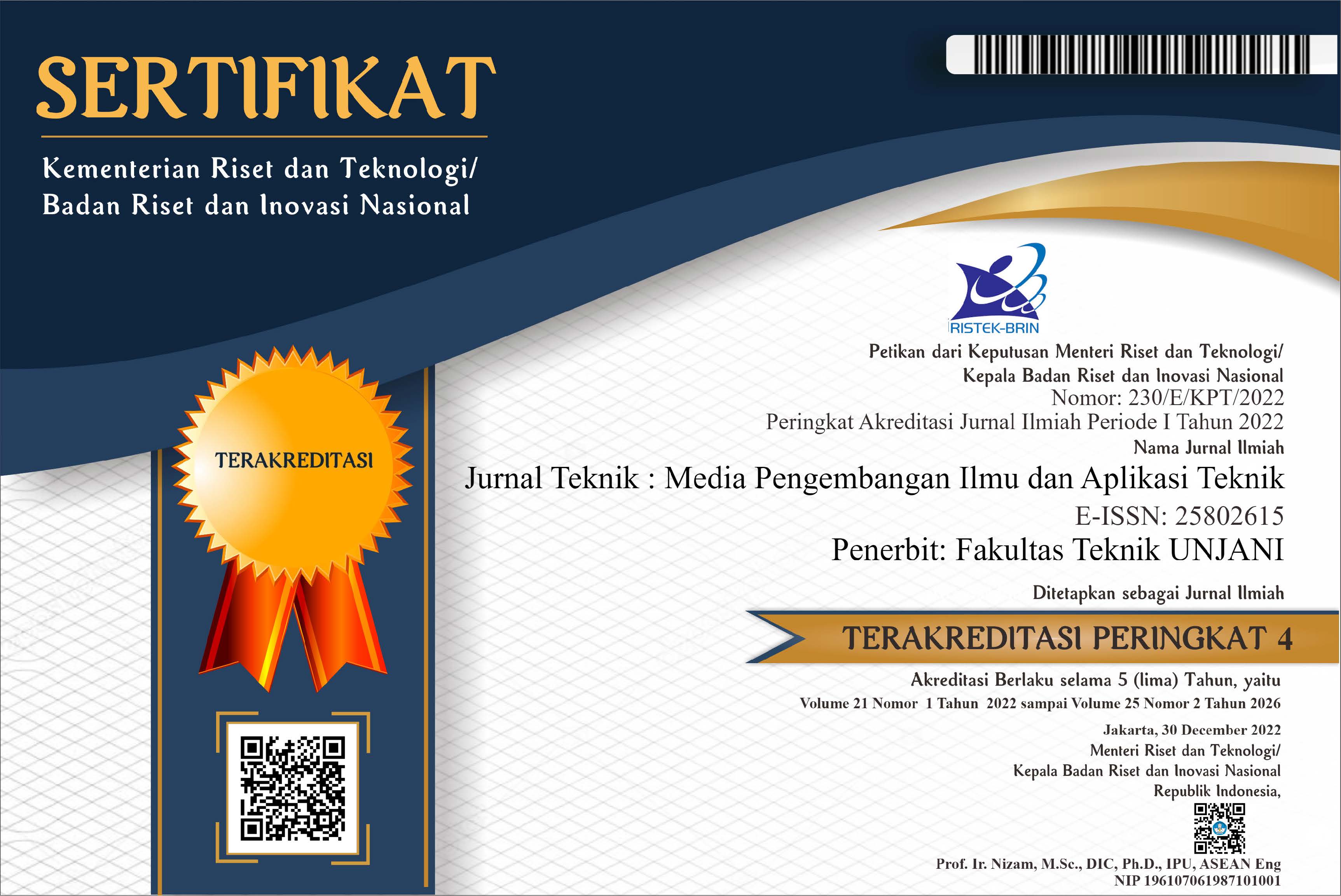Klasterisasi Sumber Penyebaran Virus Covid-19 dengan Menggunakan Metode K-MEANS Di Daerah Kota Cimahi dan Kab. Bandung Barat
DOI:
https://doi.org/10.26874/jt.vol19no02.233Keywords:
Covid-19, Clustering, K-means, WEKAAbstract
The Covid-19 virus originated from the city of Wuhan in China. Transmission is very fast and rapid to various parts of the world including Indonesia. This study discusses the clustering of sources of the spread of the covid-19 virus using the k-means method using software for Cimahi City and West Bandung Regency. The purpose of this study is to obtain information about 5 clusters of the source of the Covid-19 virus, namely cluster 0 (offices), cluster 1 (places to eat), cluster 2 (houses), cluster 3 (shopping), and cluster 4 (public transportation). during May to July 2020 for Cimahi City and West Bandung Regency. The results can be concluded that the highest cluster 0 from Kab. West Bandung with an average of 0,05%, for cluster 1 the highest impact of covid-19 was from Kab. West Bandung with an average of 0,55%, for cluster 2 with an average of 0,02%, for cluster 3 the highest impact of covid-19 was from Kab. West Bandung with an average of 0,04%, for cluster 4 the highest impact of covid-19 was from Cimahi City with an average of 0.79%.
Downloads
References
Ahmad, A. (2019). Perkembangan Teknologi Komunikasi dan Iinformasi: Akar Revolusi dan Berbagai Standarnya. Jakarta: Dakwah Tabligh, Vol. 13, No. 1.
Asroni, R. A. (2015). Penerapan Metode K-Means Untuk Clustering Mahasiswa Berdasarkan Nilai Akademik Dengan Weka Interface Studi Kasus Pada Jurusan Teknik Informatika UMM Magelang. Magelang: Ilmiah Semesta Teknika.
Benri Melpa Metisen, H. L. (2015). Analisis Clustering Menggunakan Metode K-Means Dalam Pengelompokan Penjualan Produk Pada Swalayan Fadhila. Bengkulu: Media Infotama Vol. 11 No. 2.
COVID-19. (2020, September 26). Retrieved from covid-19: https://covid19.go.id/
Gunawan Abdillah, F. A. (2016). Penerapan Data Mining Pemakaian Air Pelanggan untuk Menentukan Klasifikasi Potensi Pemakaian Air Pelanggan Baru di PDAM Tirta Raharja Menggunakan Algoritma K-Means. Cimahi: Seminar Nasional Teknologi Informasi dan Komunikasi.
Iin Parlina, A. P. (2018). Memanfaatkan Algoritma K-Means Dalam Menentukan Pegawai Yang Layak Mengikuti Asessment Center Untuk Clustering Program SDP. Pematangsiantar: CESS (Journal of Computer Engineering System and Science) Vol. 3 No. 1.
Mardiana, T. (2015). Bag Of Word Clusitering Using WEKA. Yogyakarta: Universitas Gadjah Mada.
Narwati. (2016). Pengelompokan Mahasiswa Menggunakan Algoritma K-Means. Jakarta: Fakultas Teknologi Informasi.
Nurlaila Suci Rahayu Rais, M. M. (2018). Kemajuan Teknologi Informasi Berdampak Pada Generalisasi Unsur Sosial Budaya Bagi Generasi Milenial. Jakarta: Mozaik Vol. X Edisi 2.
Pareza Alam Jusia, F. M. (2019). Clustering Data Untuk Rekomendasi Penentuan Jurusan Perguruan Tinggi Menggunakan Metode K-Means. Jambi: IKRA-ITH Informatika.
Riyani Wulan Sari, A. W. (2018). Implementasi Rapidminer Dengan Metode K-Means (Study Kasus: Imunisasi Campak Pada Balita Berdasarkan Provinsi). Pematangsiantar: KOMIK (Konferensi Nasional Teknologi Informasi dan Komputer) Volume 2, Nomor 1.
Setiawan, Daryanto. (2018). Dampak Perkembangan Teknologi Informasi dan Komunikasi Terhadap Budaya. Deli Serdang: SIMBOLIKA, Vol. 4.
Setiawan, Daryanto. (2018). Impact of Information Technology Development and Communication on Culture. Deli Serdang: SIMBOLIKA.
WEKA. (2020). Retrieved from WEKA: https://dokumen.tips/education/bab-1-pendahuluan-weka.html
Windarto, A. P. (2017). Penerapan Data Mining Pada Ekspor Buah-Buahan Menurut Negara Tujuan Menggunakan K-Means Clustering. Pematangsiantar: Techno.COM, Vol. 16, No. 4.
Zulfah, S. (2016). Pengaruh Perkembangan Teknologi Informasi Lingkungan (Studi Kasus Kelurahan Siti Rejo I Medan). Medan: Universitas Islam Sumatera Utara
Additional Files
Published
How to Cite
Issue
Section
License
Copyright (c) 2020 M. Reza Hidayat, Arief Rachman

This work is licensed under a Creative Commons Attribution-NonCommercial-ShareAlike 4.0 International License.
Penulis yang menyerahkan artikel di Jurnal Teknik: Media Pengembangan dan Aplikasi Teknik untuk keperluan publikasi telah mengetahui bahwa Jurnal Teknik: Media Pengembangan dan Aplikasi Teknik memberikan akses terbuka terhadap konten untuk mendukung pertukaran informasi mengenai ilmu pengetahuan, sesuai dengan penerbitan daring yang berbasis Open Access Journal dan mengikuti Creative Commons Attribution 4.0 International License. Sehingga penulis setuju dengan ketentuan-ketentuan berikut:
1. Penulis memegang hak cipta dan memberikan hak publikasi pertama kepada pihak jurnal dengan pekerjaan secara bersamaan
di bawah Creative Commons Attribution 4.0 International License yang memungkinkan orang lain untuk berbagi pekerjaan
dengan pengakuan kepengarangan karya dan publikasi pertama artikel tersebut di Jurnal Teknik: Media Pengembangan dan
Aplikasi Teknik.
2. Penulis dapat melakukan perjanjian tambahan untuk hak distribusi non-eksklusif artikel yang telah diterbitkan di jurnal ini
(misalnya, posting ke sebuah repositori institusi atau menerbitkannya dalam sebuah buku), dengan mengakui bahwa
publikasi pertama dilakukan di Jurnal Teknik: Media Pengembangan dan Aplikasi Teknik.
3. Penulis diizinkan dan didorong untuk menyebarkan karya mereka secara daring (misalnya, dalam repositori institusi atau
laman web penulis) setelah artikel terbit (proses penerbitan artikel selesai). Hal ini terkait dengan imbas dari pertukaran
informasi yang produktif (Lihat Pengaruh Open Access).












